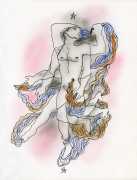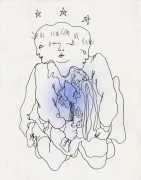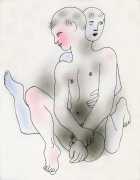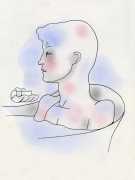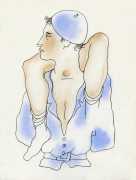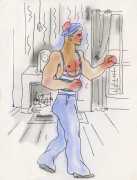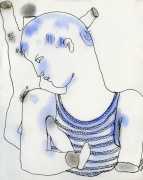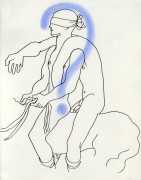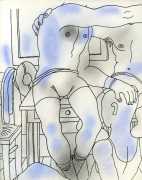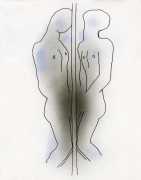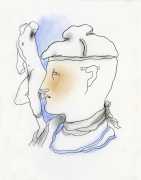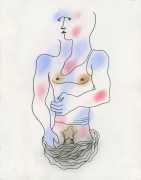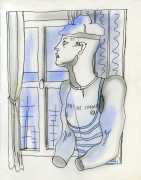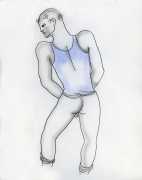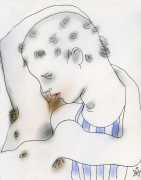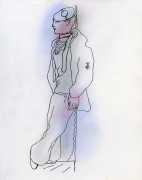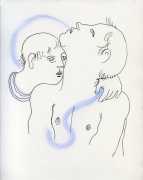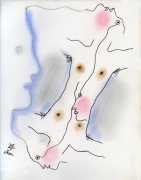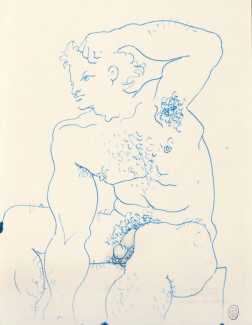
When Le livre blanc (The White Book) was first published, unillustrated and in a printing of just twenty-one copies, no author’s name was given, and even when the first illustrated edition appeared two years later only the illustrations were credited to Jean Cocteau. Had Cocteau written it as well as illustrated it? In typically Cocteau fashion, the first English translation of 1957 included this introduction from the man himself: ‘Who wrote it? Did I? Another? Probably. Are we not become others the moment after we’ve done writing? A posthumous book? That too is possible; are we not today yesterday’s dead? Therefore do not be uneasy if you find it in you to attribute this book to me. I’d not be in the least bit ashamed of it. I simply beg the unknown author’s forgiveness for thus taking unfair advantage of his anonymity.’
The episodic construction of the book is certainly unlike any other by Cocteau. The narrator tells of his love for boys and young men, relates a few incidents from his childhood, mentions his father’s latent homosexuality, and then describes his own unhappy affairs. Two of the episodes include moments of self-deception when he believed himself to be in love with women. Each episode ends in death or heartbreaking separation. Dargelos the schoolboy dies from angina in hospital; Alfred is abandoned sobbing on the pavement; Pas de Chance is deserted in a hotel bedroom; and Mademoiselle de S.’s brother shoots himself. The message is that homosexual love is doomed to failure, disappointment, treachery or death, and towards the end of the book is there a cumulative effect of sadness and isolation. There is certainly no incitement to adopt the homosexual way of life and love, and the plea at the end of the book for the love of man for man to be recognised for its own sake is heartfelt and moving.
The usual reason given for Cocteau’s refusal to acknowledge authorship of the book when it first appeared is that he did not wish to upset his mother, who was then still alive. His reasons for not conceding authorship, even in 1957, seem to constitute a game he was playing both with himself and with his readers. Rarely has any so-called anonymous book contained such strong internal proof of its creator’s hand.
Jean Cocteau’s illustrations to Le livre blanc are among his best, his sure spare lines using minimum effort to produce erotic and compelling images of sexual joy and pain. The strategic use of a limited colour palette for emphasis adds to the emotional impact of the imagery.
The suite of seventeen illustrations plus a frontispiece reproduced here are from the 1930 Editions du Signe edition of Le livre blanc, which was produced in a printing of 450 copies. Cocteau’s illustrations were hand-coloured by M.B. Armington.
The best English translation of The White Book is that by Margaret Crosland, published by City Light Books, from the introduction to which much of the information above is paraphrased.


